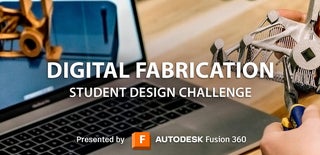Introduction: 3D Printed Vise, and a Short Tour Through Product Survey
Hi, our names are:Salvador Lima, Thiago Baez and Fermín López Suárez, we are students from 3°B in the Escuela Técnica Roberto Rocca (ETRR) from Campana, Buenos Aires in Argentina, and with some friends we made this project. Which was proposed tu us by our teachers to practice product survey, and as one step was 3D modelling we took the decision to join our to groups (2 Students on each one) to 3D print it. This was an idea that surged from an Design and Automation Division in our school (D.D.A.), which has some 3D printers, and was made for purposes like this one.
Supplies
- Sheets of paper
- Pencils (Personal recommendation: a 3B, HB and a 2H)
- Computer with Fusion 360
- Access to a 3D Printer
Step 1: Sketches
On this step you are going to make sketches of all the pieces of the project as the ones above, with this you are going to define the proportions of your project, and also you should try to make subsets to show/understand how the parts work together, and indentify standard components (If there are).
Step 2: Croquis
With this step you are going to define the dimension of your product according to the proportions of the previous step, the difference is that this ones are in 2D and includes the measures, and the sketches are in 3D and as we have already said the proportions. You can use the examples above to guide yourself.
Step 3: 3D Modeling
With the information from both of the previous steps you are going to now start to model it on Fusion 360, you will probably find some things to change respect to the original idea, but this shouldn't be a problem.
Here we let you the models of each piece and the assembly:
Step 4: Adaptation for 3D Printing
To prevent you from errors we've made this adaptation step, which we would have liked to have when we first printed it. At that moment we realised that there were some errors with printing it, so here we got you some recommendations:
- Avoid using spheres, try to replace them with other thing that fulfills with the same function.
- Don't use very small threads, the 3D printer is not going to be to make one, so thread it yourself, or think on another option.
- Have a +- 0.5mm tolerancy with the things that have to fit in others.
The modified components:
Step 5: The End!
Now you have got a little 3D printed vise, but also now you have learnt how to survey any product you want to do, or one that is already done. Our project isn't fully printed already (Because we are not the only ones to use D.D.A. services), but we will keep in touch with you to share the progress of our project.
¡We may do more Instructables to give a detailed description of each step in the future!

Participated in the
Digital Fabrication Student Design Challenge



















